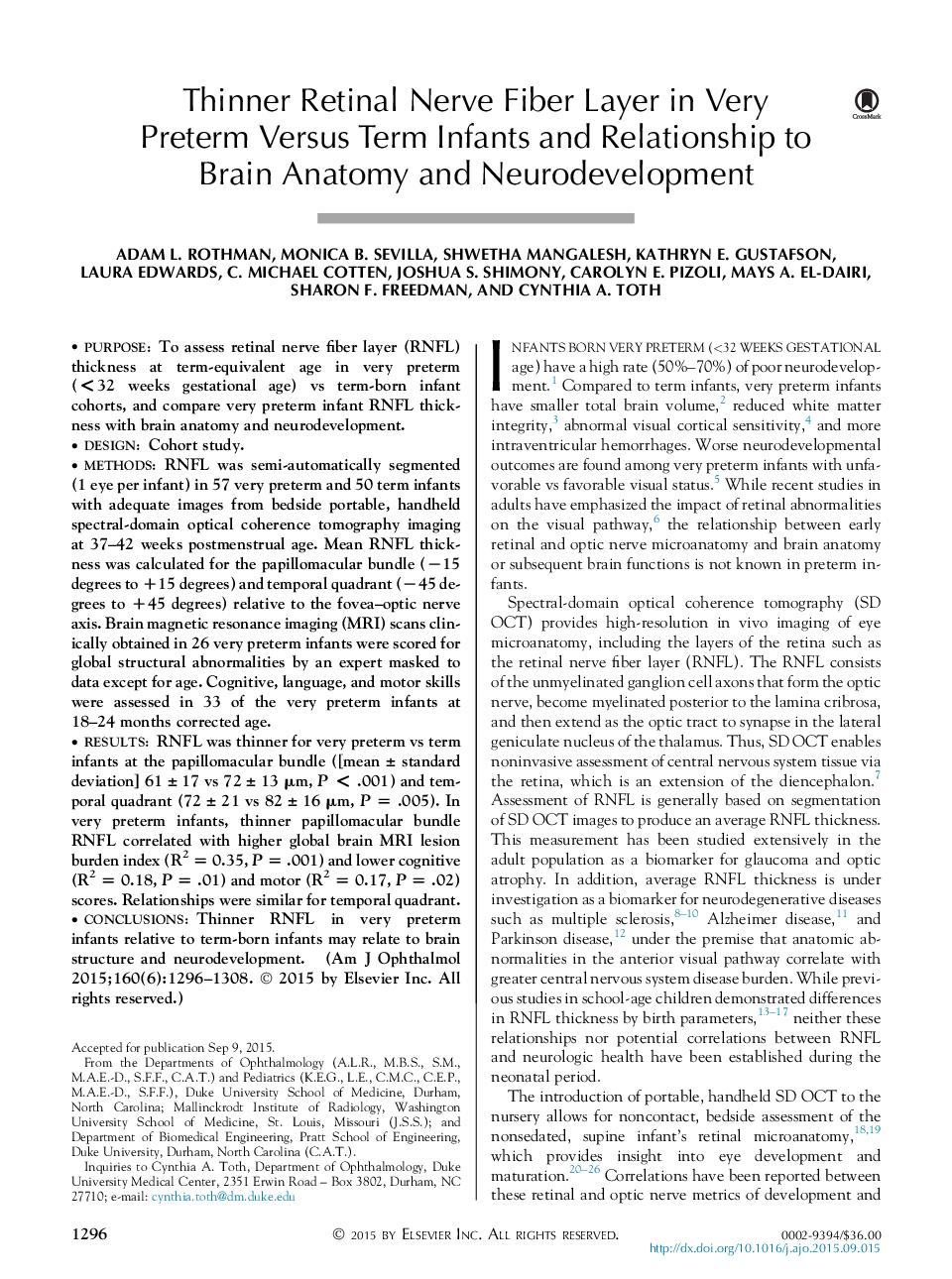| Article ID | Journal | Published Year | Pages | File Type |
|---|---|---|---|---|
| 6194904 | American Journal of Ophthalmology | 2015 | 15 Pages |
PurposeTo assess retinal nerve fiber layer (RNFL) thickness at term-equivalent age in very preterm (<32 weeks gestational age) vs term-born infant cohorts, and compare very preterm infant RNFL thickness with brain anatomy and neurodevelopment.DesignCohort study.MethodsRNFL was semi-automatically segmented (1 eye per infant) in 57 very preterm and 50 term infants with adequate images from bedside portable, handheld spectral-domain optical coherence tomography imaging at 37-42 weeks postmenstrual age. Mean RNFL thickness was calculated for the papillomacular bundle (â15 degrees to +15 degrees) and temporal quadrant (â45 degrees to +45 degrees) relative to the fovea-optic nerve axis. Brain magnetic resonance imaging (MRI) scans clinically obtained in 26 very preterm infants were scored for global structural abnormalities by an expert masked to data except for age. Cognitive, language, and motor skills were assessed in 33 of the very preterm infants at 18-24 months corrected age.ResultsRNFL was thinner for very preterm vs term infants at the papillomacular bundle ([mean ± standard deviation] 61 ± 17 vs 72 ± 13 μm, P < .001) and temporal quadrant (72 ± 21 vs 82 ± 16 μm, P = .005). In very preterm infants, thinner papillomacular bundle RNFL correlated with higher global brain MRI lesion burden index (R2 = 0.35, P = .001) and lower cognitive (R2 = 0.18, P = .01) and motor (R2 = 0.17, P = .02) scores. Relationships were similar for temporal quadrant.ConclusionsThinner RNFL in very preterm infants relative to term-born infants may relate to brain structure and neurodevelopment.
